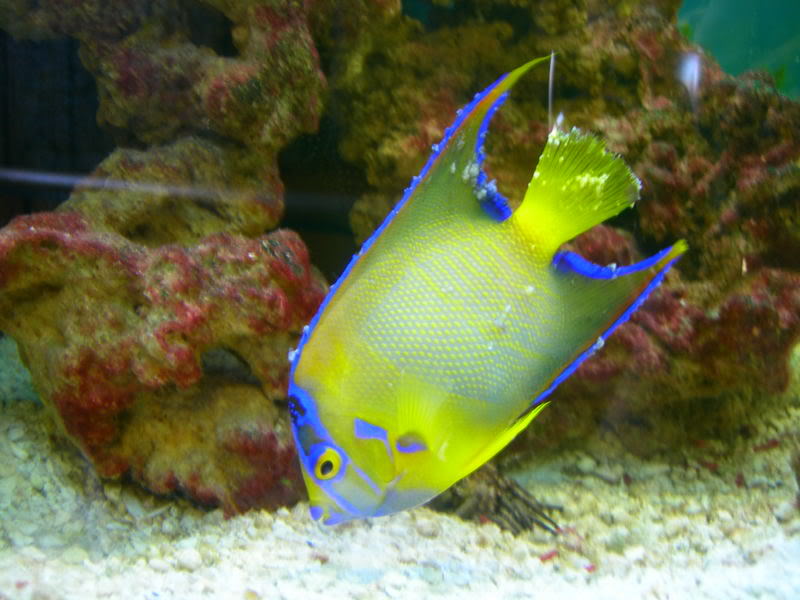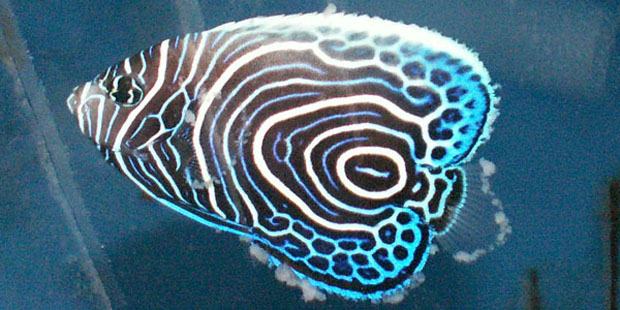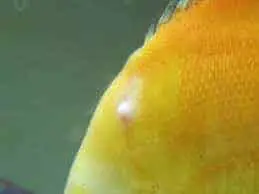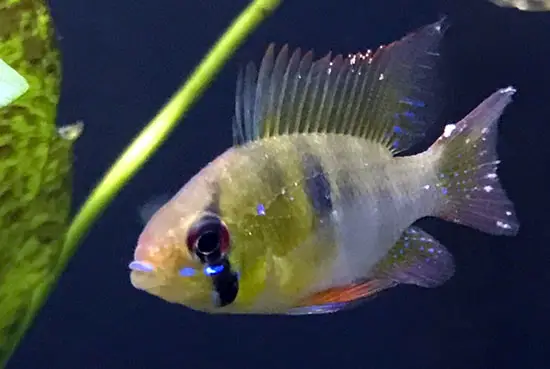- Your cart is empty
- Continue Shopping
Lymphocystis aka Cauliflower Disease

Lymphocystis aka Cauliflower Disease
Lymphocystis is a disease that makes fish have growths on its body like could either be pink or white in color. It is sometimes referred to as ‘Cauliflower Disease.’ Sometimes the growth on the body of the fish is the same as the fish’s color.
What You Need To Know:
* This is a virus that many fish carry for life. The white nodules (cauliflower-like growths) can grow both externally and internally; so symptoms are not always visible.
* There is no known cure for Lympho. However, feeding vitamin-enriched foods and maintaining pristine water conditions will help send the virus back into remission.
* Lympho is rarely fatal – usually only older or weakened fish are at risk.
Lymphocystis appears as a white, beige or (in rare cases) black colored wart-like growth that usually starts on the fins/spines, and sometimes spreads to the body. It can also grow over internal organs, including a fish’s gills. Initially it may be small (looks like Ich), but then grows in size (which is how you know it is not Ich). Lympho is a virus that many fish carry for life. Fortunately, it is rarely fatal or even harmful to the fish, and symptoms will come and go.
Treatment Options – No known cure or treatment exists. However, feeding vitamin-enriched foods and maintaining pristine water conditions may expedite the “going away” process. (Food soaking Beta-glucan seems to be particularly effective.) The lesions/nodules typically clear in 2-3 weeks, but can also take months in rare instances.

The symptoms of lymphocystis are highlighted below:
- Wart-like growth (nodules) on the skin, fins, gills, and mouth of Discus.
- Lesions in the mouth and on parts of the body.
- Exophthalmia (protruded eye) in the eye or behind it.
- When the nodules are too much on the body, the Discus may have difficulty swimming and breathing.
Disease Description And Causes of Lymphocystis
The lymphocytes disease makes nodules that look like warts appear on the body of your discus fish.
Lymphocystis is the result of an infection that is caused by an iridovirus called Lymphocystivirus or Lmphocystis disease virus (LCDV) from a family of viruses known as Iridoviridae.

There are other iridovidal viruses that are disease-causing than lymphocystis viruses such as ranaviruses and megalocytiviruses – these viruses even have a higher mortality rate when they attack fishes.
Be that as it may, the growths that appear on the body of Discus fishes give them an unsightly appearance and they become less marketable.
Lymphocystis affects specific types of fishes – the different strains of the virus have a particular species of fish that they affect. If a strain of lymphocystis does not attack the species of fishes that are susceptible to its attack, it can attack a fish species that is closely related to it.

Can Lymphocystis Kill A Discus Fish?
Yes, Lymphocystis could kill Discus in two cases:
- If the extent to which discus is infected is great, Discus may die.
- If the growth can become infected with bacteria and if that happens, it could kill your Discus fishes.
The lesions that this disease cause appears in varying locations on the body of the fish thus making it difficult to diagnose.
How Lymphocystis Is Diagnosed?
There are three ways to diagnose Discus Lymphocystis disease:
[1] – Skin Scraping
Diagnoses are done by scraping the skin of Discus and the part that is scraped off is then placed under a microscope for analysis.
[2] – Histology Analysis
Another way to diagnose lymphocystis is by performing a histology analysis. To do this, a veterinarian scraps a part of the skin and lesion on the fish and puts it in formalin to be observed over a few days or weeks.
[3] – By Looking At The Symptoms
How To Identify Lymphocystis From Ich?
- The Lumps Growing On The Skin Of Discus Is Rough: One symptom of lymphocystis is that there are lumps on the skin of the discus and these lumps are rough. When the lumps on the skin of the discus are round and smooth, whatever is happening to Discus is not a result of being infected by lymphocystivirus, instead, it is called a papilloma or a tumor that could be caused by a varying number of conditions.
- Growth On The Skin Cluster Together: When the symptoms (such as growth) appear on discus, an early diagnosis may suggest that the infection could be caused by ich (Ichthyophthirius multifiliis) maybe because the growth is sparse, overtime, however, the growth begin to cluster together either on the skin, fins, mouth, and sometimes gills
- The Disease Can Also Affect The Tissues Of Discus And Cause: Pebbles or nodules (growth) that look like warts on either the skin, fins, and mouth develop as a result of infection by lymphocystis but it does not just stop there. Lymphocystis goes on to attack the tissues within the body of Discus.
- Discus Fishes Could Also Develop Lesions: Inside their mouths or at the base of their dorsal fins.
 Discus Lymphocystis Treatment
Discus Lymphocystis Treatment
Much like tumors or viruses, there is no direct treatment for lymphocystis (viruses are difficult and somewhat impossible to treat) and therefore, saying that a treatment for viruses is just like saying that there is a cure for the common cold.
The recommended methods of treating Discus lymphocystis (although, not directly) are:
- Changing Tank Water: This is done by draining 50 percent of the tank water and adding new water by passing it through the clean filter in the tank.
- Treating The Tank Water With A UV: Through UV treatment of tank water and over-filtration, the bacteria in the water are reduced and this allows the immune system of discus to focus on fighting the virus.
- Some experts recommend acriflavine.
- Remove Any Stress Causes: as this could make the symptoms of the disease worse.
- Maintain A Healthy Environment: In which the fish resides, the growth on the body of discus will subside as time passes by.
Lymphocystis Future Prevention Tips
Lymphocystis is not so easy to detect even in the aquarium because the disease takes a long time to incubate. The best thing to do is to lower the incidence of stress for your discus.
The ways to prevent Discus lymphocystis include:
- Feed discus with a proper diet.
- Keep tank water clean.
- Maintain a stable water temperature in the tank.
- Maintain a healthy discus environment.
Conclusion
Lymphocystis is a disease that results from an infection caused by a virus from the Iridoviridae family called Lymphocystivirus or Lymphocystis Disease Virus (LCDV). The disease causes growth to appear on the skin, mouth, sometimes gills, and fins of discus and other kinds of fishes. The color of the growth is sometimes white or pink and sometimes, it takes the color of the fish.
It is not very fatal (does not kill discus) except in situations where the infection is severe or if the growth is further infected by bacteria.
There is no treatment for lymphocystis; if left for a few months, the growth will subside however proper care must be given to both discus as well as the tank and tank water in which it resides. source
